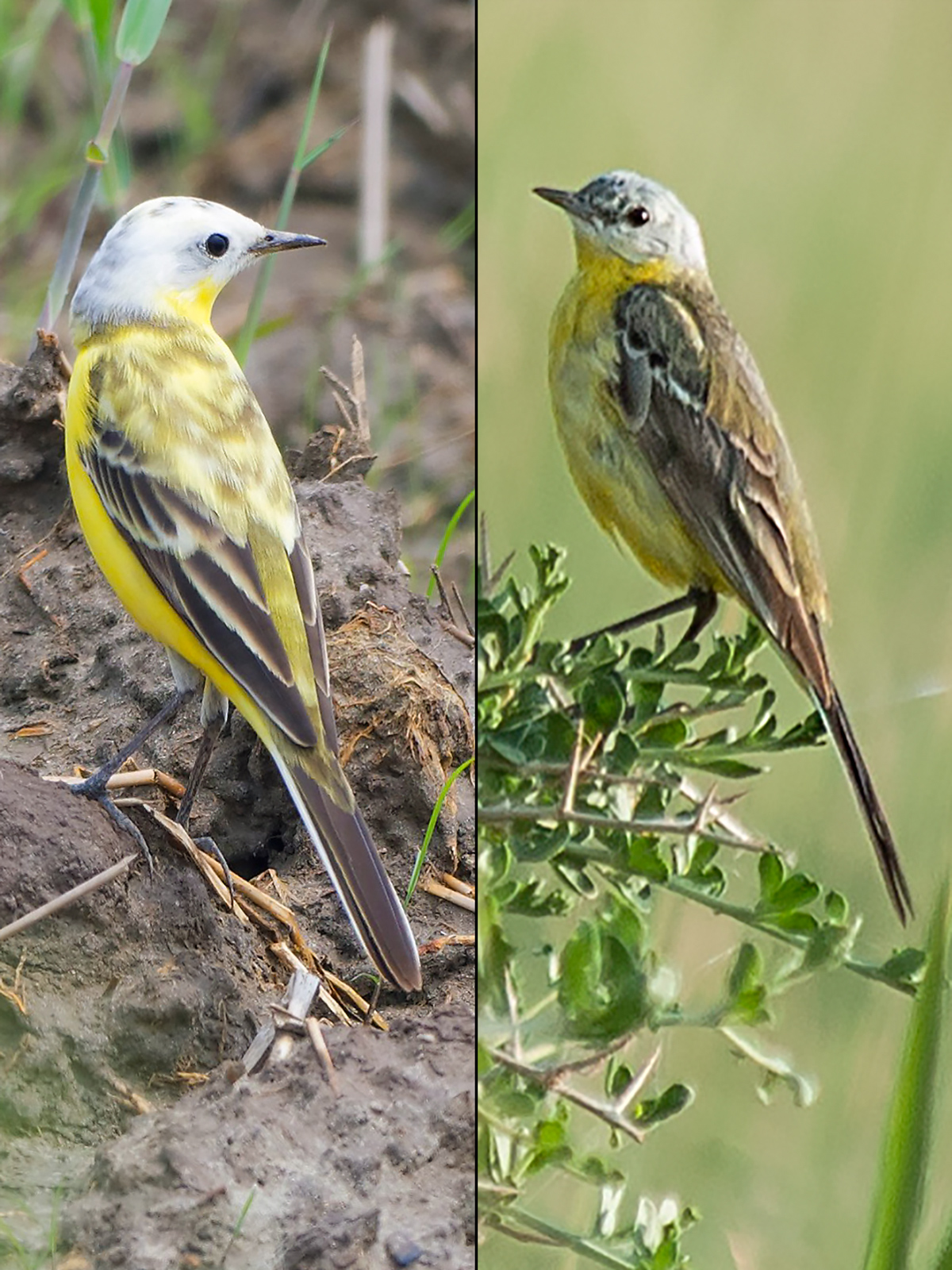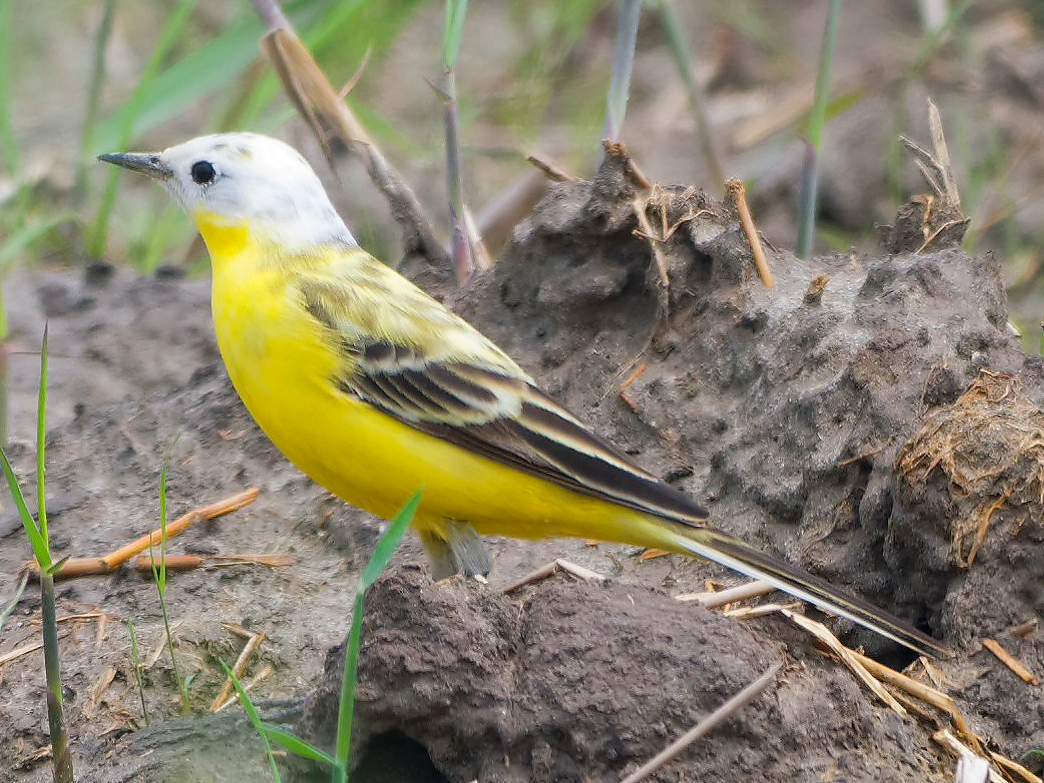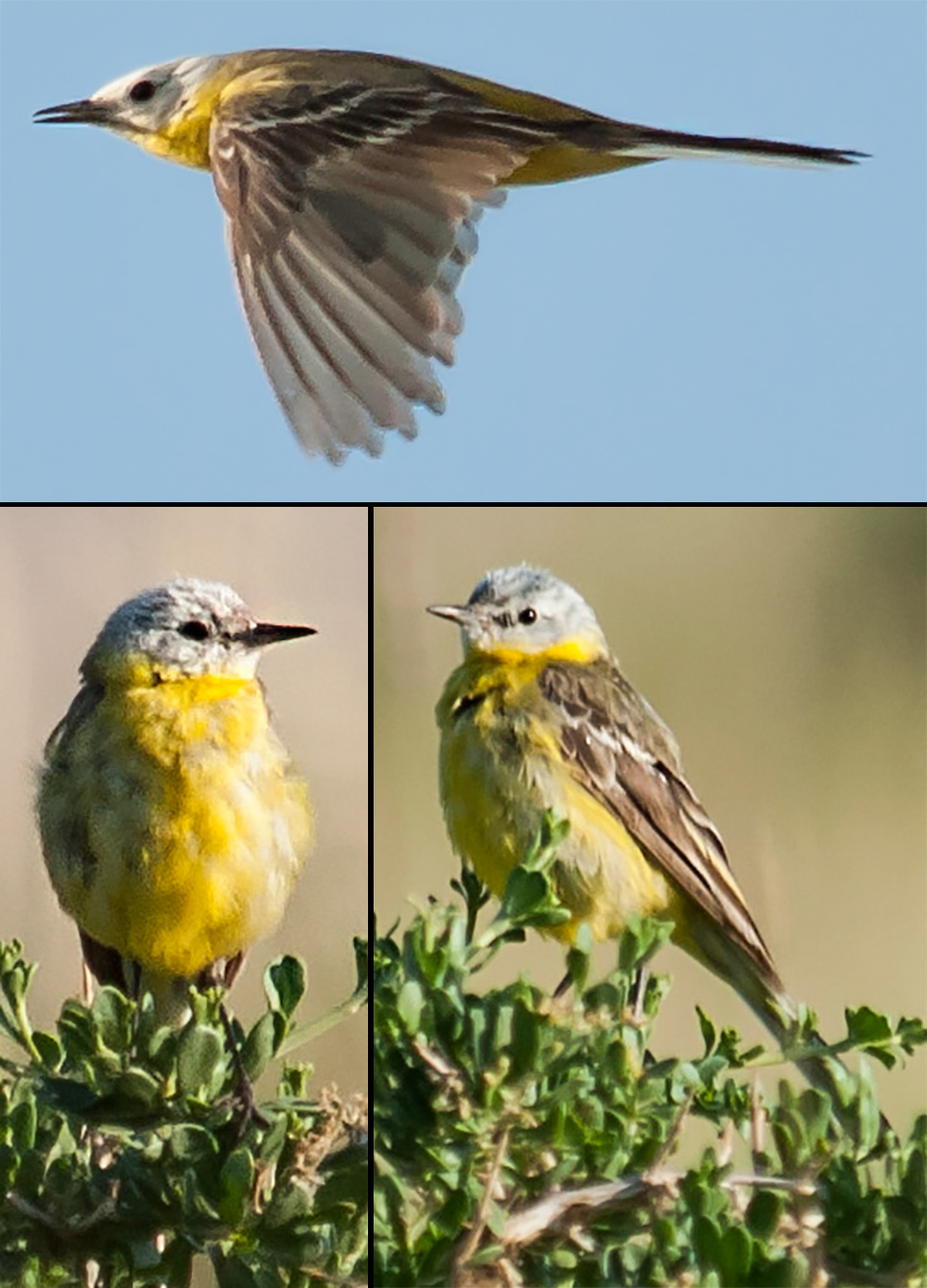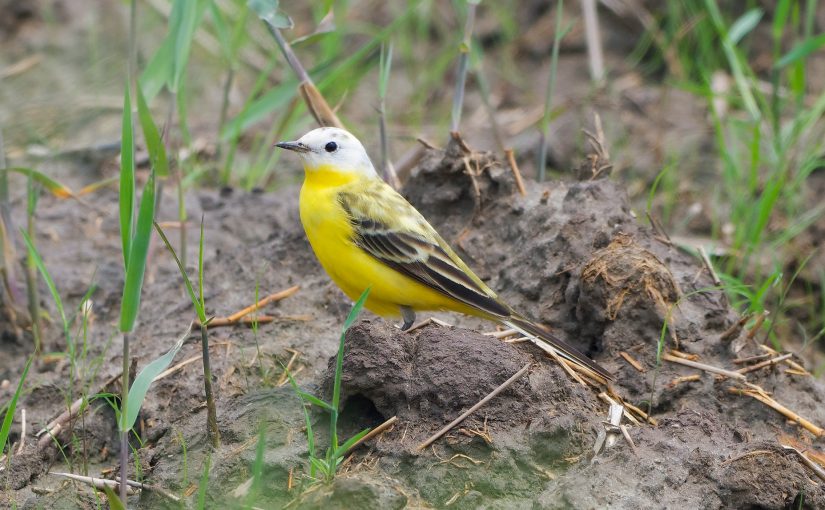by Craig Brelsford
Founder, shanghaibirding.com
Found at Shanghai’s Cape Nanhui on 1 May: possible White-headed Yellow Wagtail Motacilla flava leucocephala. The discovery by Haiming Zhao provoked excitement and uncertainty among Shanghai birders. Certain aspects of the wagtail, notably the pale mottling on its mantle, cast doubt on an identification of White-headed. “Those pale/odd-looking feathers are unusual for leucocephala,” said Gomboo Sundev, a bird-tour leader in Mongolia, where leucocephala breeds. “I have never seen such an individual of the subspecies in Mongolia” (in litt., 2019).
Beijing-based British birder Paul Holt also noted the anomaly: “I was surprised … by the Shanghai bird’s mottled mantle” (in litt., 2019). Per Alström, co-author of Pipits and Wagtails, called the pale feathers on the mantle and scapulars “puzzling” (in litt., 2 May 2019). Both experts noted the pale base to the lower mandible of the Shanghai wagtail, also unexpected in leucocephala.
Students of Yellow Wagtail will not be surprised by the uncertainty. The Yellow Wagtail complex is a “systematic conundrum”; the various subspecies of the complex often “defy separation under the biological species concept” (Tyler 2004, 689). Interbreeding of the various subspecies occurs “freely at overlap zones, producing fertile hybrids” (689), often making it the case that “the direct parentage of Yellow Wagtails cannot be deciphered” (725). There is furthermore the prospect of partial albinism, a phenomenon that can make other subspecies of Yellow Wagtail appear white-headed (Alström & Mild 2003, 80, 269, 282).
In the case of leucocephala, another reason for the uncertainty is the sheer lack of knowledge about the race, even among elite ornithologists. Holt describes White-headed Yellow Wagtail as a “poorly known subspecies” (2019); Alström says his experience with the race is limited to “a few specimens and only one live bird” (in litt., 7 May 2019); Sundev told me he has seen the subspecies only about a dozen times (2019). The lack of information forces even great birders such as Holt to speculate: “The million-dollar question is whether [the mottled mantle and pale basal half of the lower mandible of the Shanghai bird] fit within the range of variation in leucocephala, or are they suggestive or even indicative of less than thoroughbred genes?” (2019)
Why is so little known about leucocephala? The biggest reason is the remoteness of its breeding range. White-headed Yellow Wagtail breeds in sparsely populated northwestern Mongolia, at places such as Khar-Us Lake (48.083328, 92.541368) and Durgun Lake (47.673106, 93.451188) (Sundev 2019). Alström and Mild say the race breeds also in areas adjacent to northwestern Mongolia, such as the Tuva Republic of Russia and “probably … northernmost Xinjiang” (2003, 281). Even the wintering range is uncertain; Alström and Mild say leucocephala “probably winters mainly in India but the exact wintering grounds are not known” (281).
The verdict on the Shanghai wagtail? “I would say it is leucocephala,” Sundev said. Holt agreed: “I would think that these [a White-headed Yellow Wagtail found in Hong Kong in April and the Shanghai wagtail] are the first two records of leucocephala for the whole of eastern China.” Alström, however, was less than fully convinced: “I’m not aware of a leucocephala with such a pale-mottled mantle as the Shanghai bird—although I can’t say they don’t occur” (7 May 2019).
PHOTOS



BIBLIOGRAPHY
Alström, P. (2019). Email to author, 2 May.
Alström, P. (2019). Email to author, 7 May.
Alström, P., Mild, K., & Zetterström, B. (2003). Pipits and Wagtails. Princeton University Press.
Holt, P. (2019). Messages to WeChat group Shanghai Birding, 1 May.
Sundev, G. (2019). Emails to author, 3 May.
Tyler, S.J. (2004). Family Motacillidae (Pipits and Wagtails). Pp. 689, 725 in del Hoyo, J., Elliott, A. & Christie, D.A. eds. (2004). Handbook of the Birds of the World. Vol. 9. Cotingas to Pipits and Wagtails. Lynx Edicions, Barcelona, Spain.
Zhao, H. (2019). Text messages to author, 2 May.
Featured image: Mysterious Yellow Wagtail, possibly White-headed Yellow Wagtail Motacilla flava leucocephala, Cape Nanhui, Shanghai. (Haiming Zhao)


Thanks a lot for showing valuable good photos of White-headed Yellow Wagtail Motacilla flava leucocephala, Cape Nanhui, Shanghai, 1 May 2019.
Best regards
This looks more like a pattern of partial leucism. The pale back feathers argue against leucocephala, and even the pale head coloration deviates from the typical pattern by showing some suspicious dark discoloration on the crown. I think there is an extremely low chance of the first East Chinese leucocephala being a rare plumage variant at the same time. An unfortunate combination of mutations in an Eastern Yellow Wagtail would presumably also be capable of causing this pattern.
Frank Rheindt
National University of Singapore
Although the head pattern seems to indicate leucocephala, I would hesitate to accept it as such (given the rarity status in the area). Judging from the pattern of the mantle, there is clearly some genetic colour aberration (leucism?) present in this bird, and a white head is a well-known aberration in Yellow Wagtail in other parts of the world. For example, the ‘Channel Wagtails’ in Britain: https://www.the-soc.org.uk/photo-gallery?start=1305
My point is, since it’s clear that this bird has a colour aberration, we should be careful; there is a risk that the head pattern is a product of the same aberration.
Best regards
Magnus Hellström
Ottenby Bird Observatory
BirdLife Sweden
It is always good to learn good stuff and see what birder experts would say at shanghaibirding.com, and it is great to see the photos of Motacilla flava leucocephala at breeding area in Mongolia. I also compared with the photo of Western Yellow Wagtail taken in HK on Apr 8, 2019 at ebird. Noted the doubt about pale feathers on the mantle and scapulars and pale base to the lower mandible of the one found in Shanghai on May 1. My question would be whether it is possible to see the photos of non-breeding leucocephala such as in India, or photos of leucocephala that is turning to breeding plumage from non-breeding plumage at any other places other than Mongolia, Hongkong and Shanghai. Would be good to see more photos of leucocephala.
You can find sereval pictures of WH Wag on BirdingMongolia https://birdsmongolia.blogspot.com/
The situation is complicated by the fact that we always find territorial beema and macronyx within the leucocephala range. Per already noted the high degree of variation displayed by leucocephala and that could be caused by gene flow created by those stray non-leucocephala males (we did never dare to ID the females to taxon!).
Aberration can show up in all bird species and hence could be found in leucocephala as well.
I would not accept this bird as a first for any region outside what is considered the normal (though wintering range not known for sure at present) range (breeding and wintering).
Similar to a bird that turned up in Hong Kong during my recent visit in March this year. I didn’t see the bird myself but its well documented here (scroll down a bit) https://johnjemi.blogspot.com/2019/04/last-week-of-march-2019-unsettled.html